Jermey Page
20 September 2015
Beijing
One Thursday morning in June, 200 senior officials crammed into an auditorium in the Communist Party’s top training academy to study a revolutionary idea at the heart of President Xi Jinping’s vision for China.
They didn’t come to brush up on Marx, Lenin or Mao, staple fodder at the Central Party School since the 1950s.
Nor were they honing their grasp of the state-guided capitalism that defined the nation for the last 35 years.
They came to hear Wang Jie, a professor of ancient Chinese philosophy and a figure in thecountry’s next ideological wave: a renaissance of the traditional culture the Communist Party once sought to destroy.
For two hours, Prof. Wang says, he reeled off quotes from Confucius and other Chinese sages—whom the party long denounced as feudal relics—and urged his audience to incorporate traditional concepts of filial piety and moral rectitude into their personal and professional lives.
“I’m getting hoarse,” Prof. Wang says over a cup of green tea after class. The previous day, he had lectured at the culture ministry and, the day before, at the commerce ministry. Mondaywould be the insurance regulator. “Xi Jinping’s words,” he says, “have lit a fuse.”
“It’s like the prodigal son returning,” says Guo Yingjie, a University of Sydney Chinese-studies professor who wrote a book on Chinese cultural nationalism. “China has had more than a century of anti-traditionalism. Now they’re heading in the opposite direction.”
In the last year, the party has publicly ordered its officials nationwide to attend lectures on Confucius and other classical Chinese thinkers, while tightening restrictions on Western influence in art, academia and religion.
Prof. Wang’s lectures joined the Party School’s core curriculum this year. Party officials didn’t respond to inquiries.
The education ministry has decreed that traditional culture, including classical literature wiped from the curriculum a century ago, be taught in schools and feature prominently in university entrance exams.
Schoolbooks, tightly controlled by the party, are being revised to include ancient texts promoting respect for elders and traditional moral values, say people involved in the process. Teachers are being retrained, as most never studied the texts.
‘National moral thinking’
The goal isn’t just to encourage “national self-confidence” but to aid “personality development,” encourage altruism and instill“Chinese national moral thinking,” the ministry says in an emailed response to questions.
The government is also plowing money into projects including a free online classical library, television series on China’s ancient history and a $250 million national center for traditional culture next to Beijing’s Olympic Stadium.
Chinese officials have portrayed all this as part of a quest to identifyChina’s distinct “cultural genes”and to re-establish China not just as a strong nation, but also as a civilization with its own core values on a par with the West.
They also have suggested they see it as a new way to justify China’s authoritarian government—as an extension of an ancient political tradition—and to tackle corruption.
“To solve China’s problems, we can only search in the land of China for the ways and means that suit it,” Mr. Xi in October told the party’s Politburo, its top 25 leaders, official media reported.“We need to fully make use of the great wisdom accumulated by the Chinese nation over the last 5,000 years.”
The changes mark a U-turn for the party and come with significant dangers. By embracing classical thinkers it once demonized, the party risks undermining its authority among citizens who recall earlier ideological campaigns.
It could also encourage Chinese citizens to explore other ideas the party has tried to wipe from history, such as those in organized religion, which the leadership still considers subversive.
Some scholars argue Confucianism is compatible with democracy; others want it to become a national religion or ideology.
Mr. Xi continues to stress the importance of Marx and Mao, and of Deng Xiaoping, who launched China’s market reforms in 1979.
He has placed greater emphasis on Mao than his two predecessors and stepped up political education on Marxism in universities.
But party insiders and political analysts say his longer-term agenda is to merge those ideas with elements of China’s ancient political culture to forge a new nationalist ideology.
Central to the ideological pivot is Confucius.
Thought to have lived in the sixth and fifth centuries B.C.,Confucius emphasized respect for elders, social ritual and personal moral virtue, including among leaders.
His ideas formed the basis of Chinese schooling and entry exams for the imperial bureaucracy for two millennia.
But by the late 19th century, reformist intellectuals concluded that China’s weakness compared with Western powers was largely due to its conservative Confucian culture.
They felt it made society too hierarchical, stifling technological innovation and fostering bureaucratic corruption.
China needed to adopt Western science and political ideas, they argued.
When the Communist Party took power in 1949, it banned ancestor worship and other Confucian rituals as “feudal practices” and taught party loyalty.
It renewed that onslaught in the 1966-1976 Cultural Revolution.
Since market reforms began in 1979, the party has allowed a limited, uncoordinated cultural renaissance.
It has also carried out periodic“patriotic education” campaigns since crushing 1989 pro-democracy protests.
Until recently, it has been wary of overtly embracing China’s ancient past amid opposition from older party members who still see Confucianism as a source of weakness.
In 2011, a Confucius statue was erected along Tiananmen Square but removed 100 days later following heated debate online and within the party.
Confucius’ comeback
Mr. Xi is taking a different tack, explicitly endorsing the cultural revival and formalizing it in schools and Party training—cherry-picking elements that suit his needs.
In September 2014, he became the first Communist leader to attend celebrations marking Confucius’ birthday.
He has complained that textbooks lack enough Chinese classical literature.
People can follow Mr. Xi’s lead at places like the Confucius Academy in the southwestern city of Guiyang, a 75-acre complex local property developers built for 1.15 billion yuan ($185 million) and opened in 2013.
Carved into a lush mountainside,it is dominated by a 30-foot-high Confucius statue.
Now managed and funded by the local government, it provides free lectures on Confucian philosophy to the public and facilities for Confucian scholars to live and work.
Last year, the party opened a traditional-culture training center here for local officials, the first of its kind. It invited the Party School’s Prof. Wang to give the first lecture: “Traditional Culture and Official Ethics.”
City and provincial bureaucrats have attended regular courses there ever since, local officials say.
“We need to help them understand how to be an upright person—a moral person,” says Xu Qi, the complex’s party secretary.
“This is Uncle Xi’s demand,” he adds, using a popular nickname for the president, who praised the Confucius Academy last year.
The complex has support from the central government, which funds a permanent exhibit on Confucius. Top leaders have visited, including party ideology chief Liu Yunshan.
One recent Saturday, some 300 people, many in their 20s, attended a free three-hour lecture on the“Book of Changes,” one of the foundations of the feng shuisystem for aligning physical places and structures with the spiritual world.
Also viewed as a moral and political guide, it is among the Confucian canon’s five classics.
Popular interest in traditional culture has grown in the past decade, influenced by Taiwanese and Hong Kong activists, experts say.
Many private kindergartens have children recite classical texts.Mainland scholars offer businessmen private classes in “national studies.”
The Guiyang complex is among clear signs the party is trying to exploit and regulate that interest, says Sebastien Billioud, author of the book “The Sage and the People: The Confucian Revival in China.”
“I think they’re using this as a test,” he says. “When everyone is cynical about everything, you need to find—or reinvent—some ideological ground somewhere. They need to invent something because growth is not going to be there forever.”
One of the party’s concerns, analysts say, is that the Mao era’s iconoclasm followed by decades of unbridled materialism has led to a moral breakdown contributing to corruption and neglect of the elderly.
‘Mao doesn’t sell’
“What we have just doesn’t sell”abroad, says Bai Tongdong, a philosophy professor at Shanghai’s Fudan University who has taught traditional culture to businessmen and officials. “Mao doesn’t sell. Communism doesn’t sell. But Confucianism and other traditional thinking can make sense.”
Before Mr. Xi took power, some party members pushed a more-assertive revival of Maoist symbols and rhetoric, championed by former Politburo rising star Bo Xilai.
While Mr. Xi has borrowed from Mr. Bo’s leadership style, the ideological balance has tipped toward cultural revivalists,political insiders say.
Among them is Wang Qishan, China’s powerful anti-corruption chief, said by people who know him to be an avid reader in history and philosophy.
In April, he held an unusual meeting with three foreigners,including the American political thinker Francis Fukuyama,according to a transcript one participant posted online. Mr. Fukuyama says the transcript was accurate, declining to comment.
During the meeting, Mr. Wang said he had read books on U.S. constitutional law, the Ming empire and England’s Tudors.“First, we need to make clear our own history and civilization,” he said. “China has outstanding DNA in its own culture.”
He said China needed to study Confucius and Mencius, a sage of the same tradition.
Mr. Wang, who couldn’t be reached for comment, also expressed admiration for 15th-century Confucian scholar Wang Yangming.
The education ministry has mandated that primary-school children be taught to understand Chinese festivals, honor their parents and “know they are part of the Chinese nation,” according to a notice issued last year.
High schoolers should take up a traditional Chinese sport, do calligraphy and recite ancient poetry, the ministry said.
University students should study “important books of ancient Chinese thought and culture.”
The China National Culture Art Center, a civic organization, has produced new traditional-culture textbooks used in pilot schemes in places such as the Beijing suburb of Tongzhou, where 51 schools hold daily traditional-culture classes, according to staff there.
In a Tongzhou primary-school class recently, children recited from a textbook based on a sixth-century text. “Be devoted to your parents with all your strength, loyal to the throne with your life,”the book intones, and, “The husband leads; the wife follows.”
“Most parents support it, but not 100%,” says Su Jinliang, director of the Tongzhou District Teacher Training Center. “Some of them feel: How can you bring back these things that were overthrown and criticized in the Cultural Revolution? They feel it’s more important to study things like English.”
Aware of such sentiments, the party is treading cautiously.
Education authorities publicly criticized one Shanghai school for making 700 children kneel before their parents in what was deemed an excessive display of filial piety.
A Beijing school was scolded for going too far in teaching girls “traditional female virtue.”
The Party School’s Prof. Wang says such problems will be ironed out as authorities clarify what is still considered “feudal.”
He has launched an app for party officials to share traditional-culture information and to question scholars about things they don’t understand.
He proposed a Confucius statue for the school’s grounds but hasn’t gotten approval.
“The time’s not quite right,” he says.
“Perhaps in a few years.”
Write to Jeremy Page at











 Subramanian Swamy
Subramanian Swamy  Vijayvaani
Vijayvaani 

.jpg)















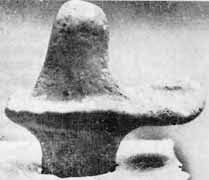 Sivalinga. Terracotta. 4.5x4.5 cm. Kalibangan.
Sivalinga. Terracotta. 4.5x4.5 cm. Kalibangan.

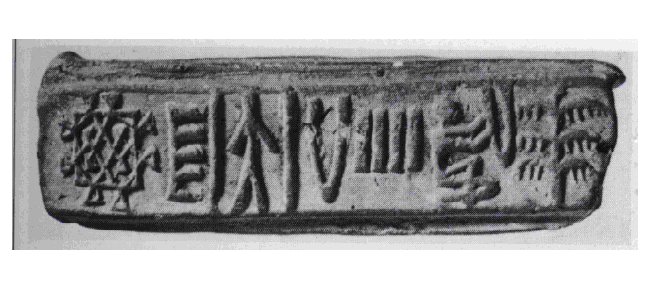
 Harappa seal.
Harappa seal.
 Crucibles. Ban Chiang. "
Crucibles. Ban Chiang. "


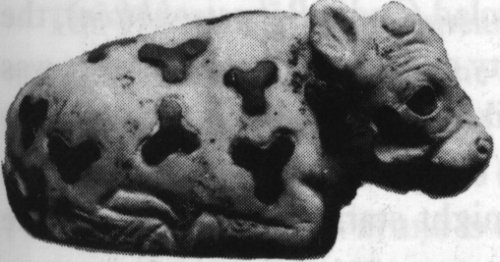
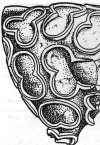
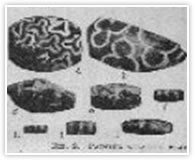




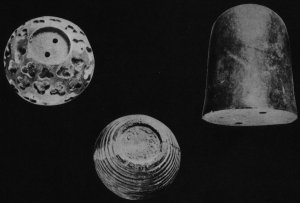 Two decorated bases and a lingam, Mohenjodaro.
Two decorated bases and a lingam, Mohenjodaro. 




 Crete. Cow-head rhython with trefoil decor.
Crete. Cow-head rhython with trefoil decor.

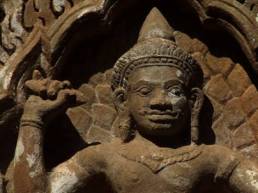
 Indra with Vajra
Indra with Vajra


 Indra on Airavata, Consort Shachi. Keshava Temple, Somnathpur.
Indra on Airavata, Consort Shachi. Keshava Temple, Somnathpur. Vajrasatva with vajra
Vajrasatva with vajra





 ''Marduk destroying Tiâmat, who is here represented in the form of a huge serpent.''
''Marduk destroying Tiâmat, who is here represented in the form of a huge serpent.''  ''Battle between Marduk (Bel) and the Dragon[Tiamat]. Drawn from a bas-relief from the Palace of Ashur-nasir-pal, King of Assyria, 885-860 B.C.E, at Nimrûd.''
''Battle between Marduk (Bel) and the Dragon[Tiamat]. Drawn from a bas-relief from the Palace of Ashur-nasir-pal, King of Assyria, 885-860 B.C.E, at Nimrûd.'' Eagle on thunderbolt with oak-leaf.
Eagle on thunderbolt with oak-leaf.  Syracyse, 288 B.C.E
Syracyse, 288 B.C.E Zeus and thunderbolt
Zeus and thunderbolt
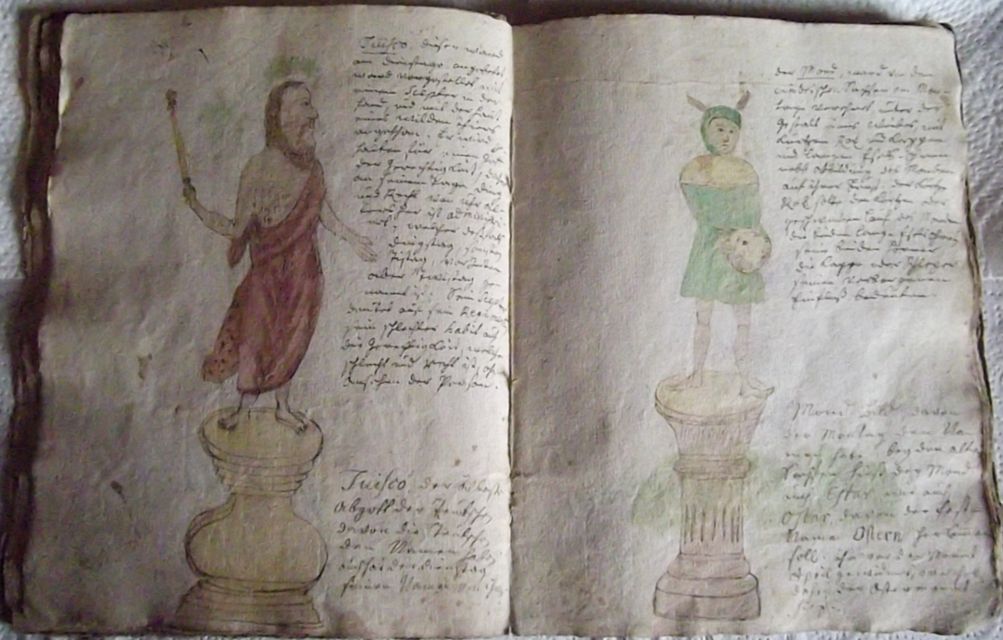
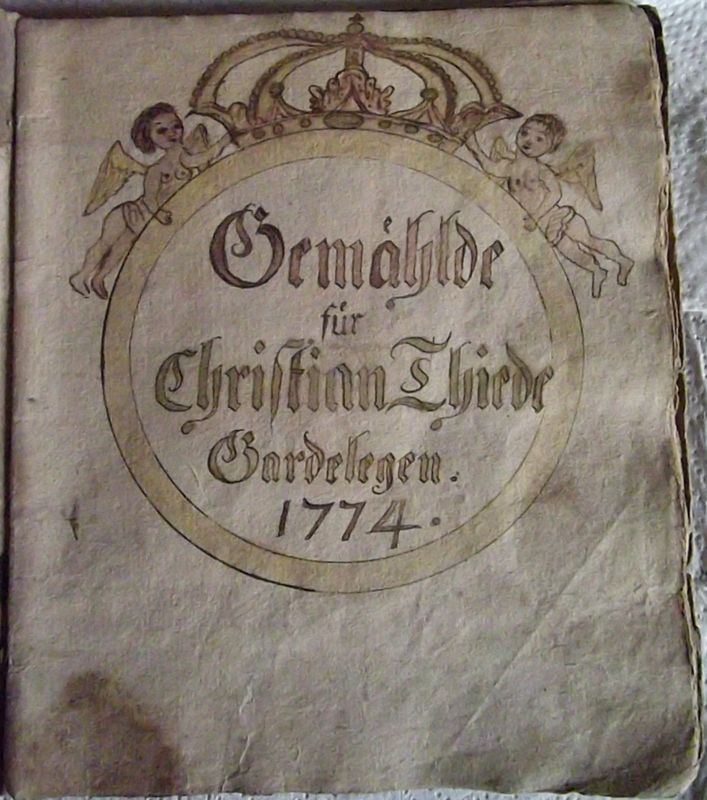


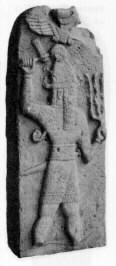








 Chidambaram Denies Family Ties with Vasan Healthcare
Chidambaram Denies Family Ties with Vasan Healthcare













The hard Truth of present day
— Christopher Pike (The Last Vampire (The Last Vampire, #1))
2 much gap burnol and eno sales up as g37 burning
Anything goes wrong n its bcos of Modi. What the hell.
C Company n it's franchise. Ceo Sona, directing the business.
These pseudo Secular media morons did not say a word when some schools banned mid-day meals during Ramadan month for all students but years old meat ban during Jain festival is hurting them. They did not utter a word when the principal of a Convent school tried to rub Mehndi off Hindu girls' hands and cut off Rakhis off wrists of boys claiming no religion related 'ornaments' in school, while the Principal herself wearing Cross pendant necklaces.
Excellent, mention the states also where this happened for sickulars to read and understand......
C Company - G37. So whats the businesses?
A) meat, alcohol, drugs, prostitution, trading lies.
N saga whats wrong with u"meat dripping in blood". R u human. I doubt.
I love ur posts and this word..... Mental Masturbation,,,,hillarious n aptly said.
You know Sir some Unknown person has said ur coming out as Modi Mouthpiece
Well i love my fellow country men....We like to comment but from behind....We want a change but wait for someone else to start
Wonder when we will wake up n Be the change ourselves.
Anycase all i would say to Modi critics is that If not him then Whom. I do not advocate my self as Modi fan but do we have a choice. He is the only light through the dark tunnel. Whether he passes the acid test or not one does not know but for sure he will not fail the way others have.
Keep up your writing n Thank you for enlightening us
Regards
bhavik
Former law minister Kapil Sibal charges at least Rs.8 lakh and up to Rs.15 lakh for one appearance at the Supreme Court. Congress politician Abhishek Manu Singhvi and Harish Salve (the son of late Congress politician NKP Salve), who is now also a London barrister, generally charge upwards of Rs.6 lakh for one day’s appearance in a case in the Supreme Court, with Salve charging up to Rs.15 lakh.
But when Subramanium goes to the Delhi high court he charges Rs.11-16.5 lakh. And when he heads to tribunals, his rates are at least Rs.25 lakh per appearance.
Rajya Sabha member and Congress politician K.T.S. Tulsi, who is also a former additional solicitor general (ASG) of India, charges between Rs.5 lakh and Rs.6 lakh in the Supreme Court. But the sought-after criminal attorney is busier in the lower courts and the high court where he charges around Rs.9 lakh.
Others charging in the range of Rs.5-6 lakh in the Supreme Court are Supreme Court Bar Association president Dushyant Dave, C.A. Sundaram, and former ASGs L. Nageswara Rao and Parag Tripathi.
Dave and Sundaram are rarely seen in the Delhi high court by most accounts, but Rao charges in the range of Rs.3-4 lakh and Tripathi charges in the range of Rs.7-10 lakh for one Delhi high court hearing. There are also seniors in Delhi who appear almost exclusively in the high courts.
Ram Jethmalani 25 lacs
Harish Salve 6-15 lacs
Abhishek Manu Singhvi 15 lacs
CA Sundaram 6 - 17 lacs
Dushyant Dave 10 lacs
K T S Tulsi = 7lacs
Kapil sibal = 9-16 lacs
Chidambaram - 7-15 lacs
Gopal Subramanimum - 11-17 lacs
Sounds these all belong to one national party only.... and these were also indirectly appointing judges.... any under table link to mold or doctor the judgments.